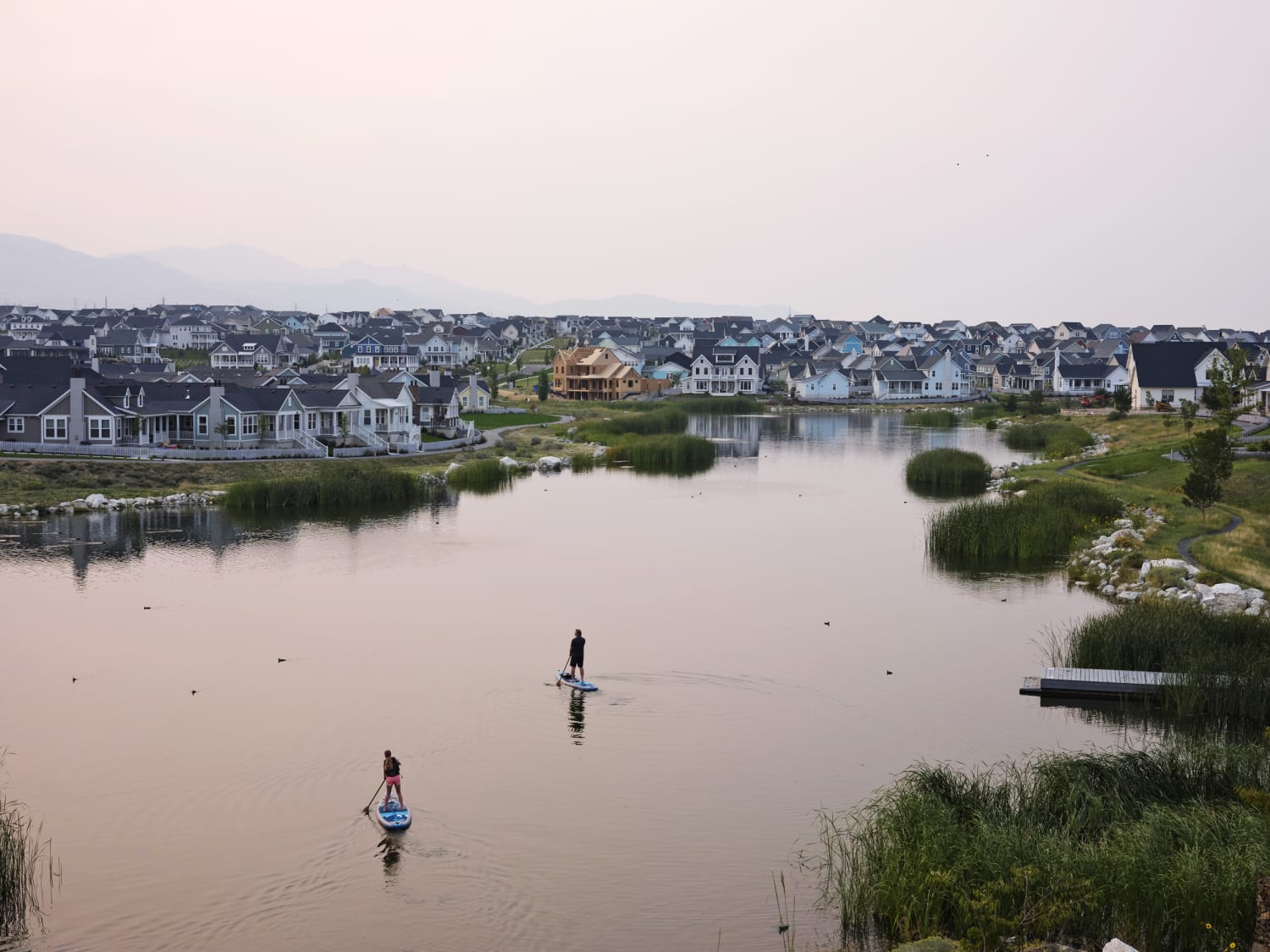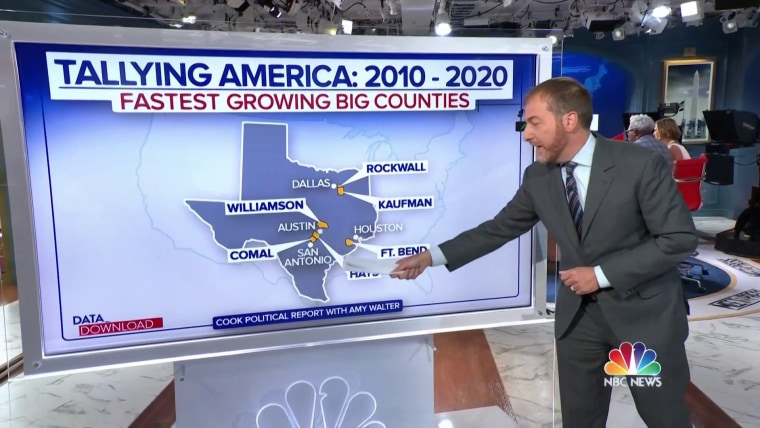In 1990, fewer than 10,000 people lived in Meridian, Idaho, a sleepy bedroom community surrounded by farmland.
Now, with a population of 117,600, its main thoroughfare, Eagle Road, gets so congested at rush hour that motorists might forget they’re in one the country’s most sparsely populated states.
The 2020 Census listed Meridian as one of the 10 fastest-growing large cities in the country. All the cities on the list grew at rates of more than 44 percent. They are all in the South and the West. And they are all suburbs.
South Jordan, Utah, for example, is outside Salt Lake City. Frisco, Texas, is just north of Dallas. Buckeye, Arizona, is west of Phoenix. And Meridian is outside Boise.
Meridian and the nine other cities represent a trend, according to U.S. Census Bureau officials. As the country’s biggest cities grow and become increasingly unaffordable to many, their suburbs have ballooned, taking on their own identities.
Marc Perry, a senior demographer at the U.S. Census Bureau, said in an email that “for the past several decades the general trend has been for the fastest-growing cities of 50k+ population to be located on the outskirts of generally fast-growing metro areas in the South and West.”
The Phoenix and Dallas-Fort Worth metro areas have had suburbs on this list every decade, he said. “Sizable amounts of empty land for construction of housing” encourages this population growth, and that land is more commonly available in the West and South. Now, people are often going farther and farther from city centers to search for empty lots, especially in cities that have been growing for the past half-century, Perry said.
Irvine, the only city on the list in slower-growing California, is about 40 miles southeast of Los Angeles. Conroe, Texas, another city in the top 10, is about 40 miles north of Houston.
Meridian, fourth on the list, is expanding along with the rest of Idaho.
Idaho was the second-fastest growing state in the last 10 years, at 17.3 percent, with much of the growth concentrated in and around Boise, according to the Census Bureau. Meridian grew from around 75,000 people in 2010 to 117,635 in the 2020 census. The change was significant enough to knock the state’s second-largest city, Nampa, down a peg, even though it also grew significantly, to more than 100,000 people. (The state’s largest city is still Boise, the capital, with a population of nearly 236,000.)
“Back in the day, in the ’60s, ’70s, ’80s, and ’90s, Meridian was more of a bedroom community to Boise,” Jan Roeser, a labor economist with the Idaho Department of Labor, said. “A lot of agricultural lands were there. … It had a very small town feel.”
Now, people are building larger homes and want larger yards, prices are going up every year, the town has a different vibe and it’s developing an urban core, she said. It has a subdivision the size of an entire square mile.
The city’s slogan, “Built for Business, Designed for Living,” positions it not as a commuter town to Boise, but as its own entity. Meridian now has a pedestrian mall, and a good deal of retail stores, breweries and coffee shops. It has gotten to a point where people are being priced out.
The city’s population growth is so rapid that infrastructure can’t keep pace. Meridian just built a high school that will serve more than a thousand students, but the school was finished and ready to open this fall before the completion of road expansions required by the county highway district to handle the influx of cars.
“Traffic’s going to be bad,” Meridian planning manager Caleb Hood told Boisedev.com. “You’ve got a bunch of teenagers driving, or moms driving their kids to school, or dads driving their kids to school, and it’s a lot of traffic out there. The roads really aren’t in a position to handle that kind of traffic within a 20-minute period.” Hood said the roads weren’t completed because no contractors would bid on the project; there’s been a labor shortage.
These growing pains are being felt around the city and Idaho more broadly, Roeser said. And while new library branches, apartment buildings and bus routes are popping up in Meridian as it develops an urban core, many rural counties are losing residents.
Meridian and suburbs like it, Perry said, are “a reminder that there are still some pockets of rapid population growth in certain areas of the country,” despite the past 10 years being the second slowest growing decade for the U.S. population. What the Census data makes clear is that many suburbs are taking on a life of their own.
“Who’s to say Meridian’s population won’t surpass Boise at some point?” Roeser said.
Source: | This article originally belongs to Nbcnews.com











